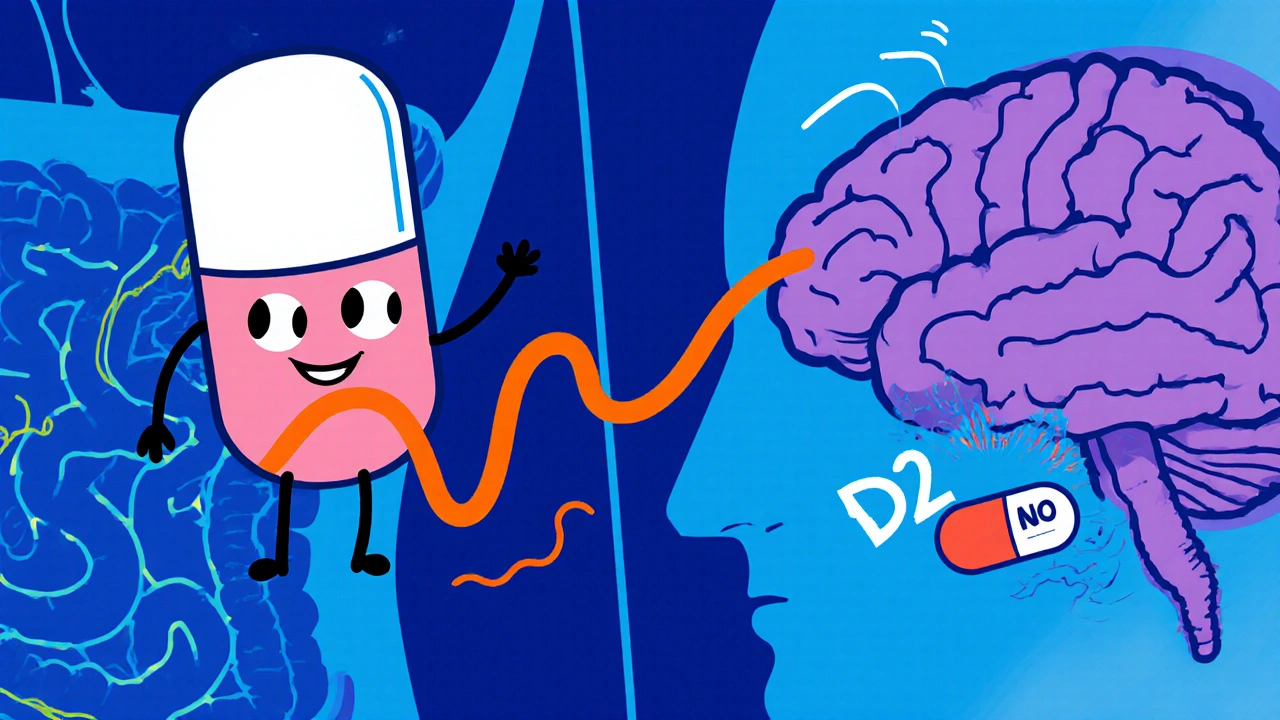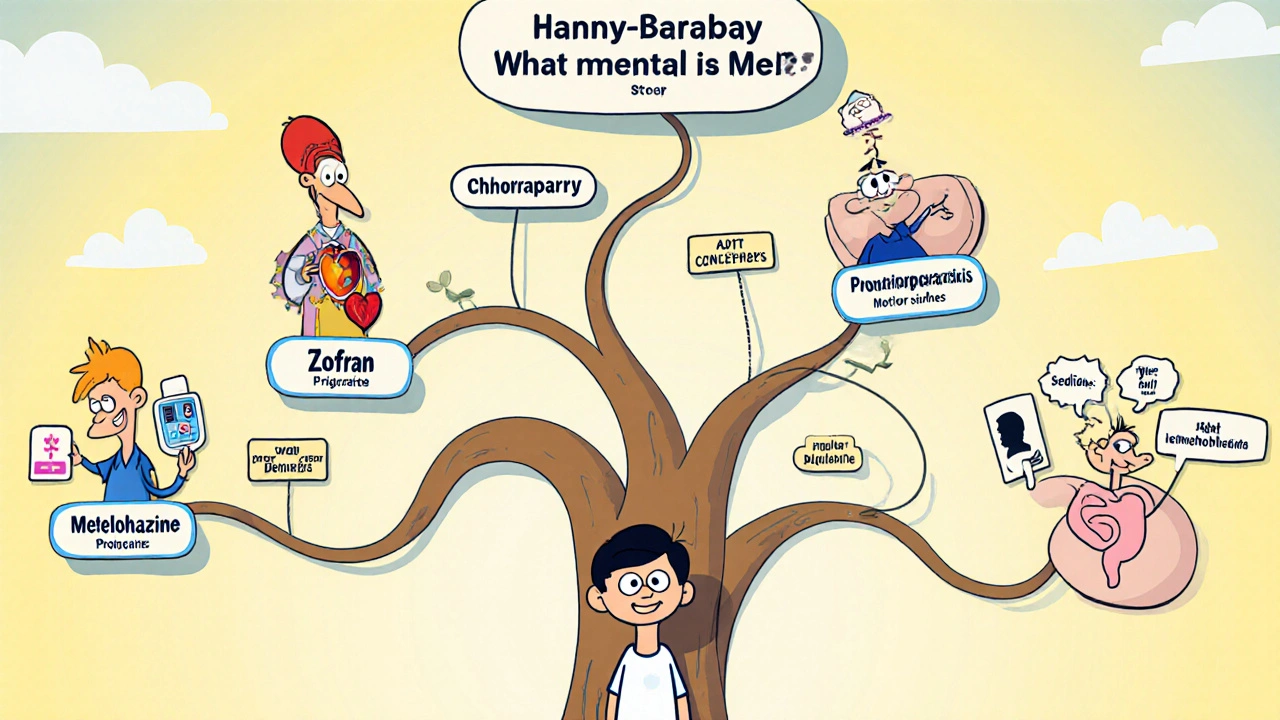
Select the option that best describes your situation to get personalized recommendations for anti-nausea medication.
Best for: This tool is designed to help you understand which antiemetic might be most appropriate based on the article's information.
Disclaimer: This tool is for informational purposes only and does not replace professional medical advice.
Feeling queasy after chemo, surgery, or even a bad stomach bug is miserable, and you’ve probably heard of Zofran as the go‑to fix. But is it always the best choice? This guide breaks down Zofran (Ondansetron) side‑by‑side with other anti‑nausea meds, so you can pick the right one for your situation.
Zofran is a prescription medication whose active ingredient is Ondansetron, a selective 5‑HT3 receptor antagonist used to prevent nausea and vomiting. It was first approved by the FDA in 1991 and quickly became the standard for chemotherapy‑induced nausea, postoperative nausea, and nausea from radiotherapy. Because it targets serotonin receptors in the gut and the brain's chemoreceptor trigger zone, it works where many older drugs fall short.

Ondansetron blocks the 5‑HT3 receptors found on vagal nerve terminals in the gastrointestinal tract and in the central nervous system. When serotonin is released-such as after chemotherapy or surgery-it normally binds to these receptors and sends a “vomit” signal to the brain. By stopping that binding, Zofran dampens the signal and stops the reflex that leads to throwing up.
Not everyone can take Zofran. Some patients experience headaches, constipation, or rare heart rhythm changes. Below are the most frequently used alternatives, each with its own mechanism and side‑effect fingerprint.
Prochlorperazine is a first‑generation antipsychotic that acts as a dopamine (D2) receptor antagonist, reducing nausea signals from the chemoreceptor trigger zone. It’s often prescribed for migraine‑related nausea and can be given orally, intravenously, or as a suppository. Common side effects include drowsiness, dry mouth, and, in a minority, extrapyramidal symptoms (muscle stiffness).
Metoclopramide works by blocking dopamine receptors and enhancing motility through 5‑HT4 agonism, helping the stomach empty faster. This dual action makes it useful for gastroparesis‑related nausea. However, long‑term use can lead to tardive dyskinesia, a serious movement disorder, so doctors limit the duration.
Promethazine is an antihistamine with strong anticholinergic effects that also blocks dopamine receptors, providing robust anti‑nausea and sedation. It’s a favorite for motion sickness and post‑operative nausea, but the sedation can be excessive for patients who need to stay alert.
Granisetron is another 5‑HT3 antagonist, chemically related to Ondansetron but with a longer half‑life, allowing once‑daily dosing for some patients. It’s approved for chemotherapy‑induced nausea and for use in radiation therapy. Side effects are similar to Zofran-headache, constipation, and rare QT prolongation.
Domperidone is a peripheral dopamine antagonist that does not cross the blood‑brain barrier as readily, reducing nausea without the central sedation seen in other dopamine blockers. It’s popular in Europe for gastroparesis and postoperative nausea, but its use in the U.S. is limited due to cardiac safety concerns.
Dexamethasone is a corticosteroid often added to anti‑emetic regimens to boost efficacy, especially for highly emetogenic chemotherapy. It doesn’t act directly on nausea pathways but reduces inflammatory mediators that can trigger vomiting. Side effects include elevated blood sugar and mood changes when used long term.

| Drug | Primary Mechanism | Typical Dose (adult) | Common Side Effects | Best Use Cases |
|---|---|---|---|---|
| Zofran (Ondansetron) | 5‑HT3 receptor antagonist | 4-8mg IV/PO q8‑12h | Headache, constipation, QT‑prolongation | Chemotherapy, postoperative nausea |
| Prochlorperazine | D2 receptor antagonist | 5-10mg PO/IV q6‑8h | Drowsiness, extrapyramidal symptoms | Migraine‑related nausea, severe vomiting |
| Metoclopramide | D2 antagonist + 5‑HT4 agonist | 10mg PO q6‑8h | Drowsiness, tardive dyskinesia (long‑term) | Gastroparesis, nausea from slow gastric emptying |
| Promethazine | H1 antihistamine, D2 antagonist | 25mg PO/IM q4‑6h | Heavy sedation, anticholinergic effects | Motion sickness, postoperative nausea |
| Granisetron | 5‑HT3 receptor antagonist | 1mg IV/PO q12h (or 1mg transdermal patch) | Headache, constipation, QT‑prolongation | Radiation‑induced nausea, long‑acting needs |
| Domperidone | Peripheral D2 antagonist | 10mg PO q8h | Dry mouth, cardiac arrhythmias (high dose) | Gastroparesis, outpatient nausea |
Picking a medication isn’t just about “which one works best.” You need to balance several factors:
Use a simple decision tree: if the nausea is from chemo → start with Zofran (or Granisetron for once‑daily). If it’s migraine‑related → try Prochlorperazine. If the patient can’t tolerate dopamine blockers → consider a pure 5‑HT3 antagonist or low‑dose domperidone.

Zofran works best for nausea caused by serotonin release, such as chemotherapy or surgery. For motion sickness, antihistamines like Dramamine or promethazine are usually more effective.
Studies show ondansetron is relatively safe in the second and third trimesters, but some data suggest a slight increase in heart defects when used in the first trimester. Always discuss with your OB‑GYN before starting.
Blocking serotonin receptors can alter vascular tone in the brain, leading to mild headaches in about 10‑15% of users. Staying hydrated often reduces the intensity.
Both are 5‑HT3 antagonists, but Granisetron has a longer half‑life, allowing once‑daily dosing or a transdermal patch. Zofran is more widely available in oral and IV forms, making it a first‑line choice in many hospitals.
Yes, especially for high‑risk chemotherapy. A common regimen is Zofran + dexamethasone ± aprepitant. The key is to avoid stacking drugs that both prolong QT interval.
If the nausea source is dopamine‑driven, such as migraine or severe vomiting unresponsive to serotonin blockers, Prochlorperazine can be more effective. It’s also cheaper in many generic forms.
Zofran can be taken with or without food. However, grapefruit juice may increase its blood level slightly, so it’s best to avoid large amounts of grapefruit while on the medication.
Write a comment